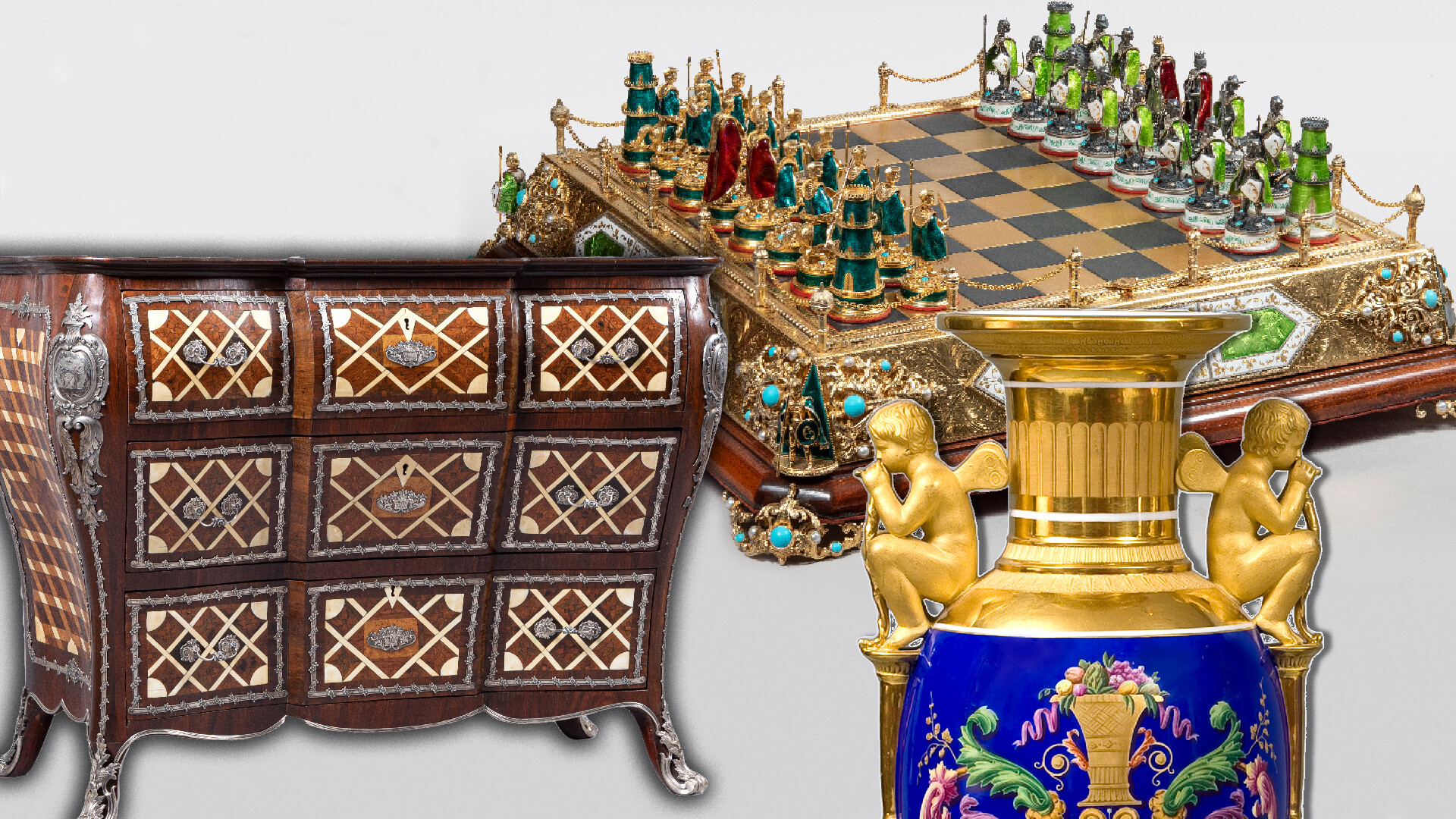
The two-story gallery opened in the vicinity of Red Square - in Moscow's Gostiny Dvor, which in general isa venue for various art fairs. Mikhail Suslov, the man behind the Fine Arts Gallery “Antique gifts” (Starinnyye Podarki), has long been a regular exhibitor at Gostiny Dvor art fairs. He is an antiques dealer and collector from St. Petersburg, well known in Russia and abroad. He is vice-president of the International Confederation of Antique and Art Dealers. His stands at art fairs are the very essence of 'Russian' taste: traditional Russian and European mahogany furniture, Imperial porcelain and glass, paintings by the classic Russian painters from Orest Kiprensky and Ilya Repin to Ivan Shishkin and Ivan Aivazovsky. Those are the kinds of items that are to be found in the rooms of the new gallery. Here are some of the most interesting examples.
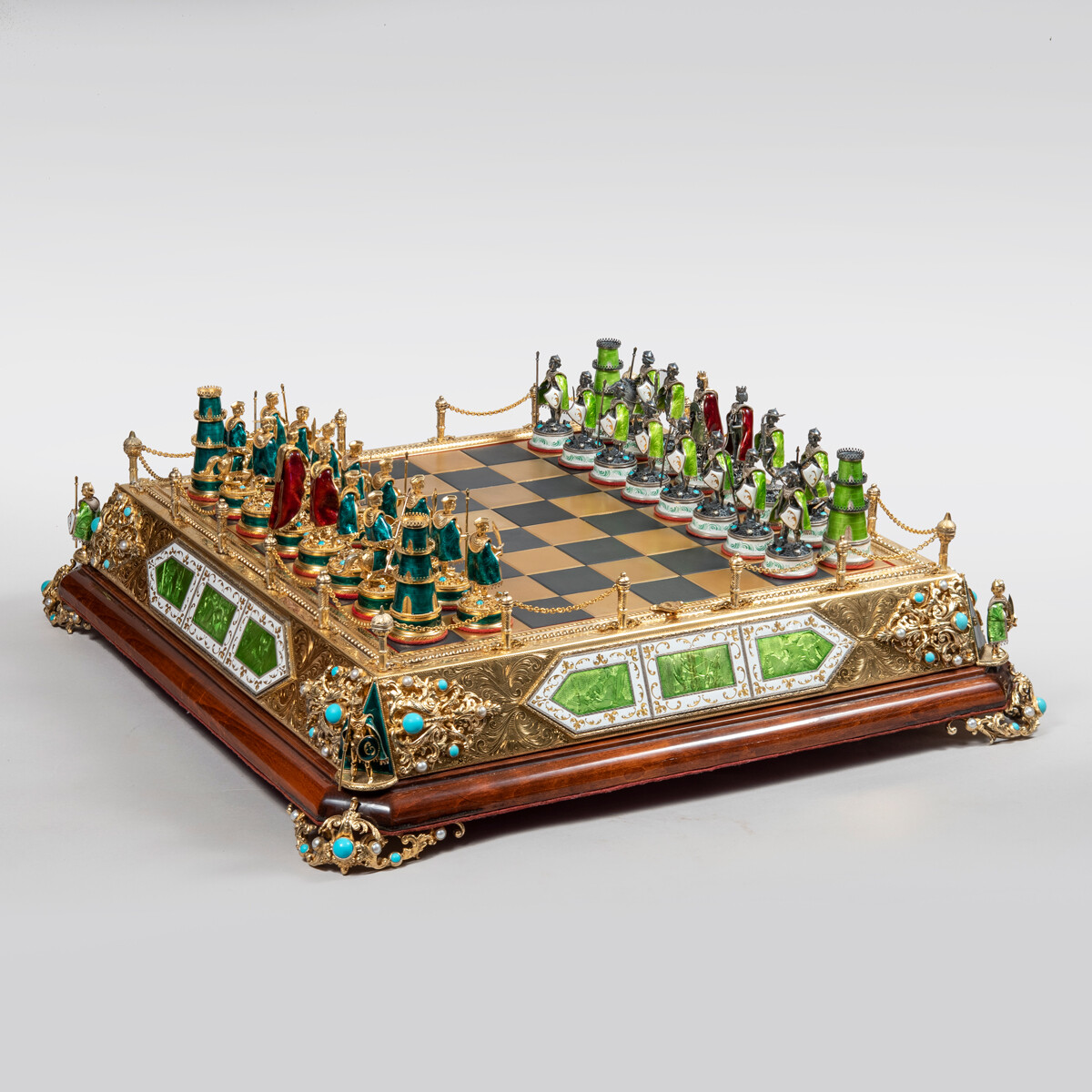
This kind of Renaissance-style chess set was remarkably popular as a gift, not to mention very expensive, during the late era of Habsburg rule in Austria-Hungary at the early 20th century. The board is inlaid with silver, gilt and anodized metal, and adorned with chasing and engraving, as well as set with turquoise gemstones and pearls; chess pieces of silver and enamel; sumptuous velvet inside the storage box. The unique design made the box with chess pieces a masterpiece of the goldsmith's art.
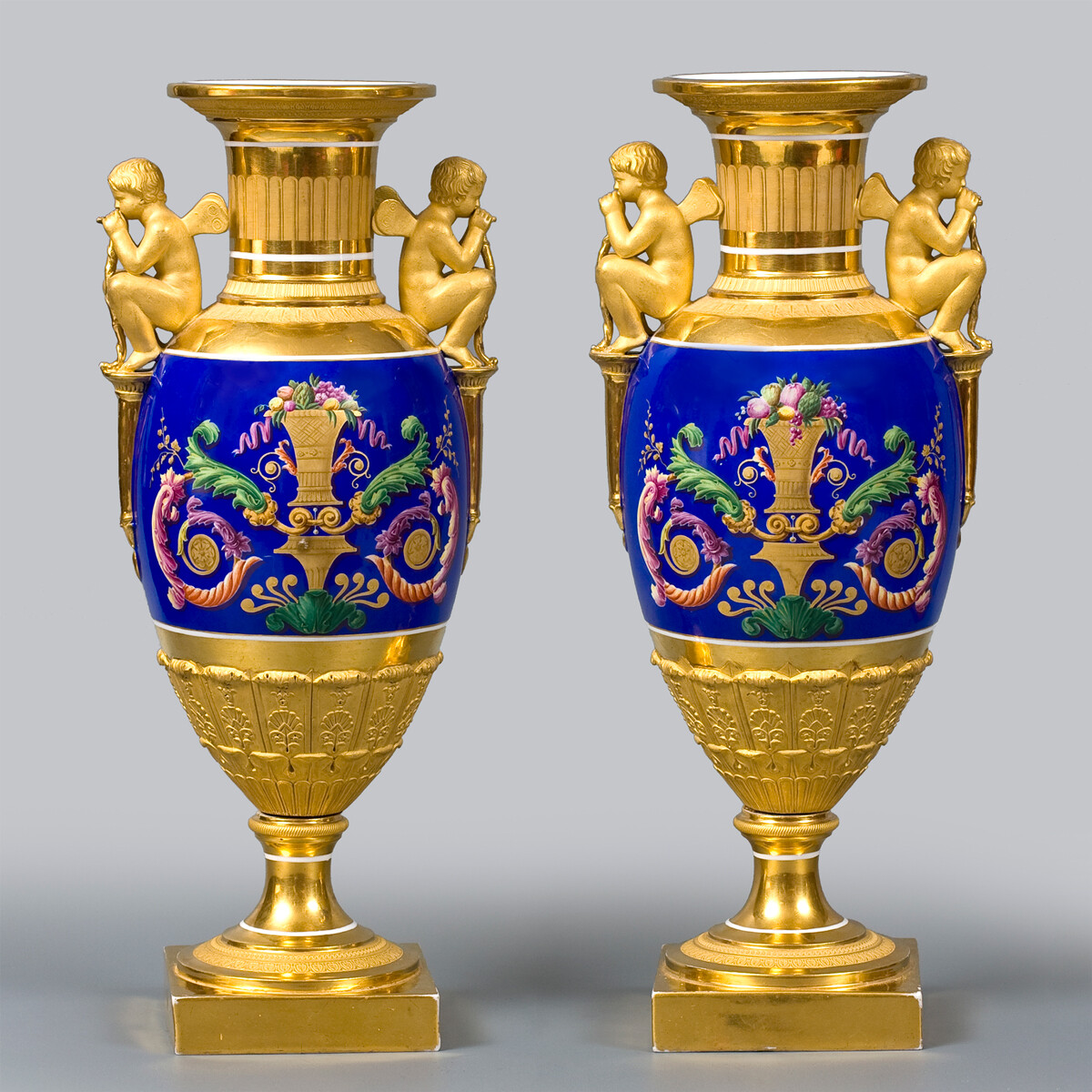
The two gilt vases on bronze pedestals were made at the Imperial Porcelain Factory in St. Petersburg as a present for Tsar Nicholas I for Christmas 1826. They are adorned with ornamental painted motifs and handles in the form of music-making putti. Similar Empire-style companion vases are to be found in all the former Tsarist residences in Russia today.
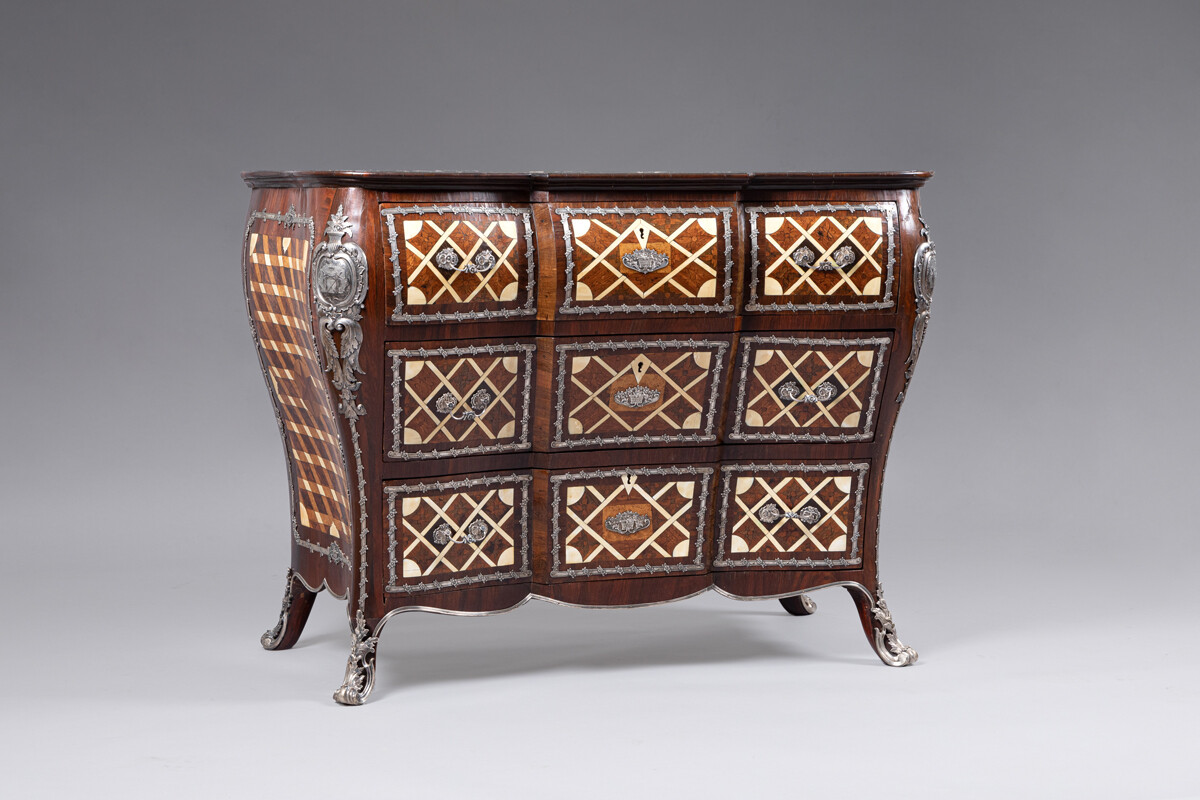
This chest of drawers is particularly rare because of the fact that, among other things, towards the mid-18th century in Russia, unlike Europe, there was practically no domestic production of fine furniture made from precious and rare tree species. This item was made to order for the prominent industrialist Nikita Demidov by St. Petersburg craftsmen using mahogany, rosewood, ebony and amaranth. The ornamentation incorporates walrus ivory, and all the decorative elements are of silver. The top is adorned with a monogram of Catherine the Great - it is one of a pair intended for presentation to the Empress (the second is now in the State Hermitage Museum).
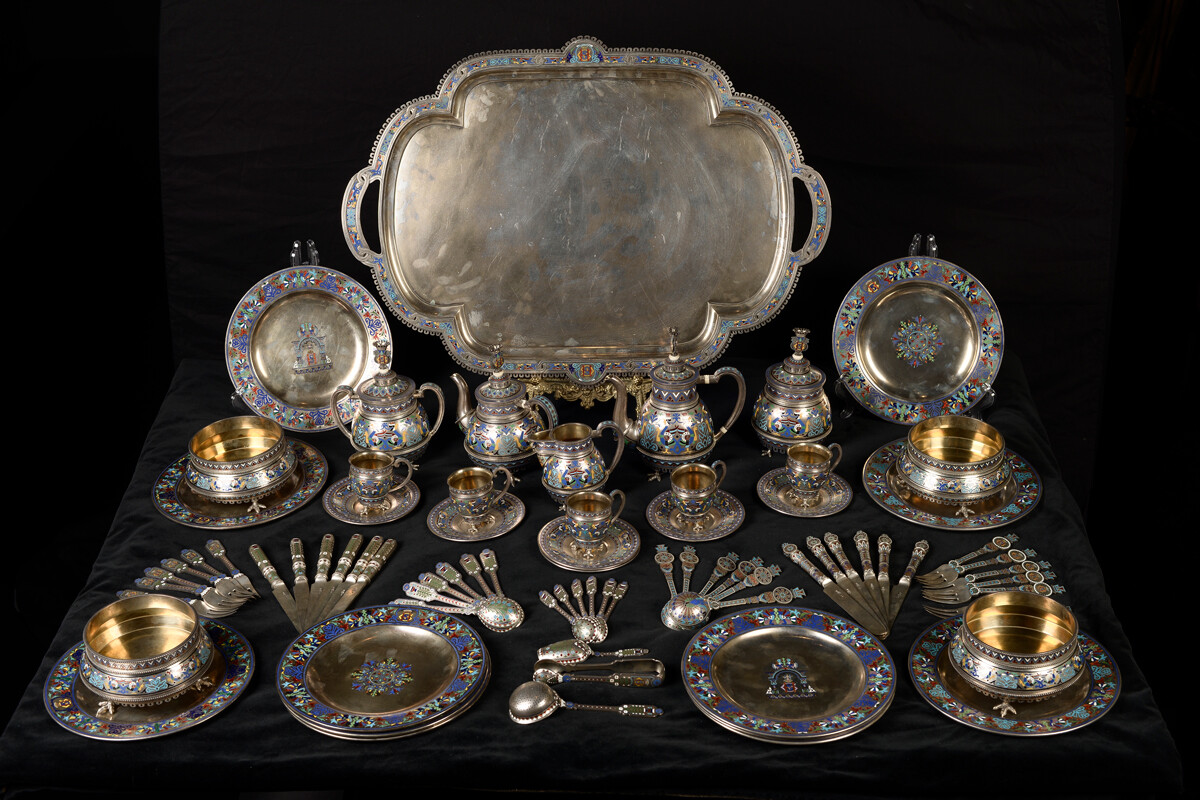
An interest in indigenous Russian culture on the part of the nobility in the second half of the 19th century gave the world 'Russian Style', based on vernacular motifs and designs inspired by lubok-style popular prints. Nor was the jeweler's art sheltered from these influences - suppliers to the Imperial Court used this style both in the design of objects of personal adornment, and in the applied and decorative arts. This huge silver service with cloisonné enameling, made in the workshop of Karl Albrecht, is a striking example.
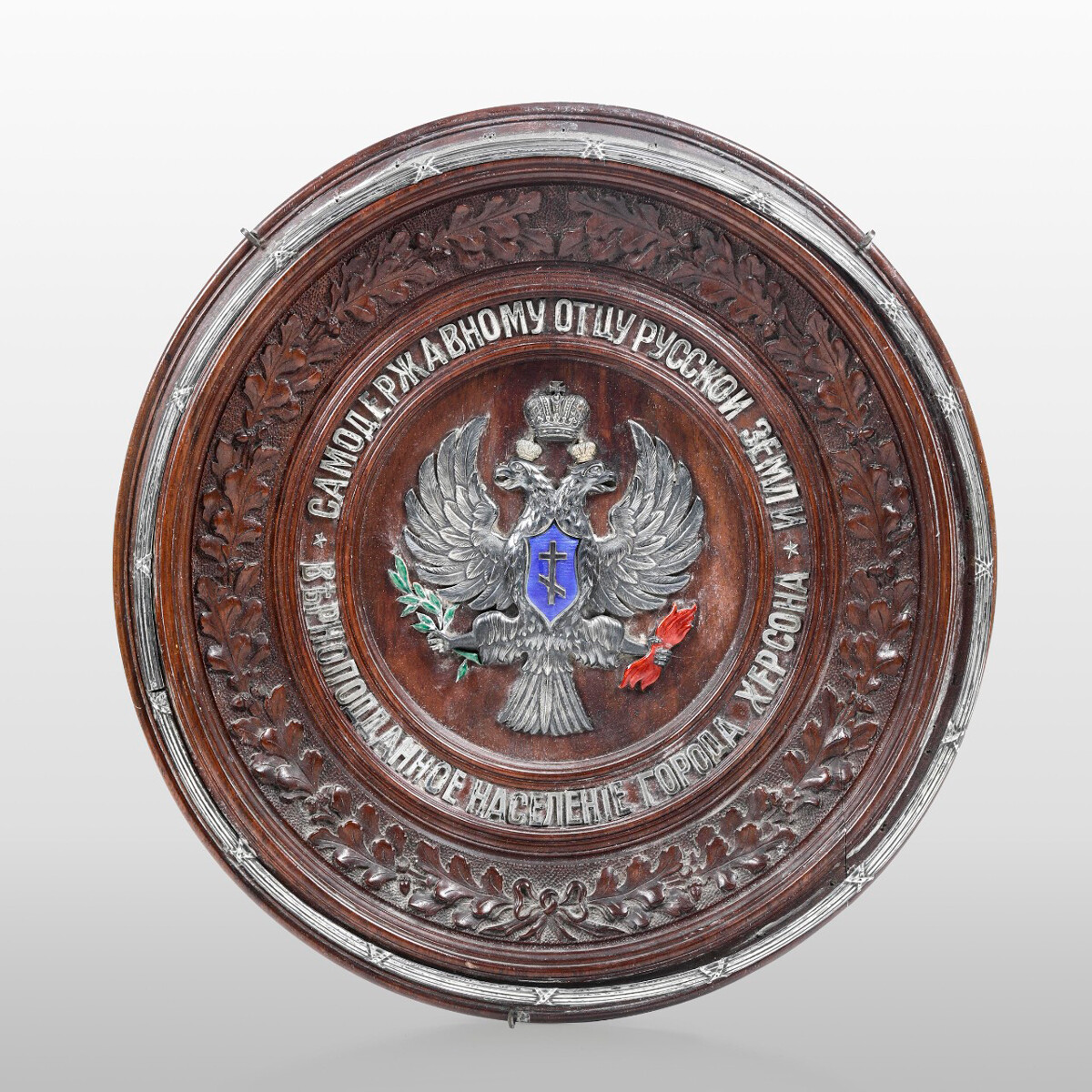
Another object with a Tsarist provenance, this was the handiwork of jewelers from the legendary workshop of Carl Fabergé. The presentation dish of wood, silver, gold and enamel is believed to have belonged to Nicholas II, to whom an inscription is dedicated: "To the sovereign father of the Russian land from the loyal population of the city of Kherson". The dish was made at the Fabergé factory in Odessa, which was part of Kherson Province of the Russian Empire at the time.
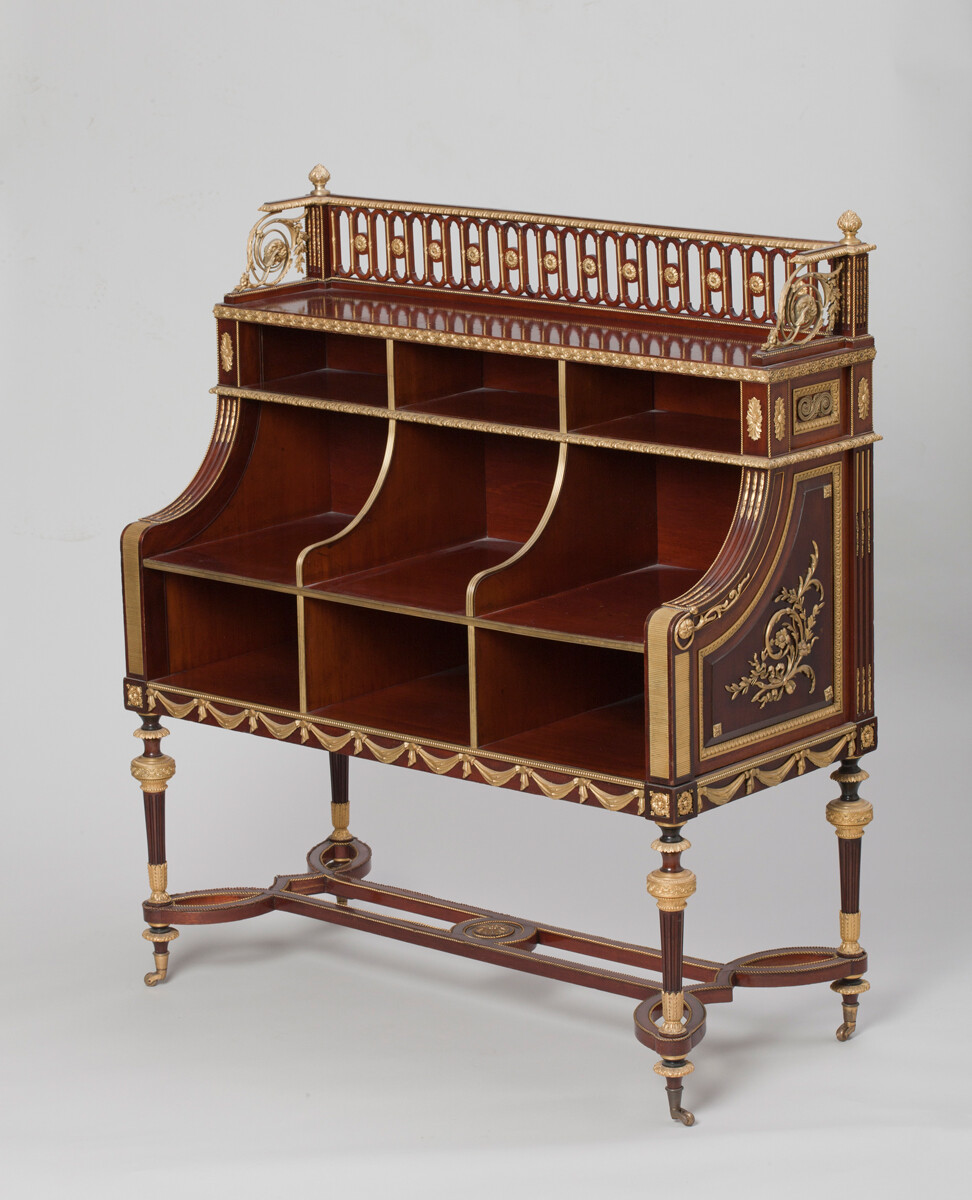
This exquisite table with shelves for storing sketches and papers was once part of the furnishings of the Blue Drawing Room in the private rooms of Empress Maria Feodorovna, wife of Alexander III. The mahogany and ormolu cartonnier was made in St. Petersburg in the workshops of Friedrich Meltzer, who was a supplier to the Imperial Court. He also made furniture for the interiors of the Winter Palace, Petergof and other Imperial residences.
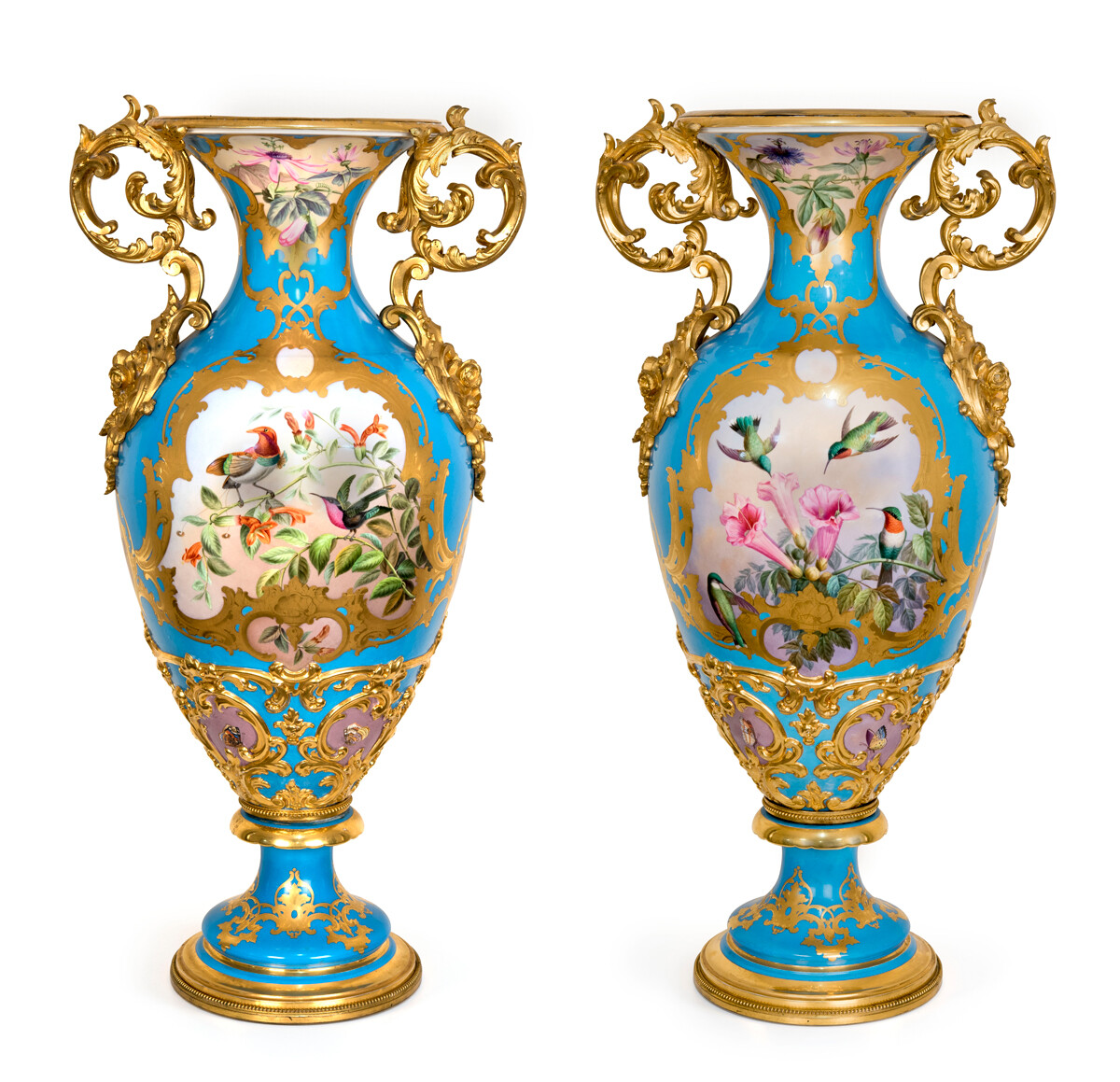
These companion vases were acquired by Empress Maria Alexandrovna, wife of Alexander II, at a Christmas fair in the Winter Palace. The two masterworks with painted enamel and ormolu were made at the Imperial Porcelain Manufactory in St. Petersburg.
Dear readers,
Our website and social media accounts are under threat of being restricted or banned, due to the current circumstances. So, to keep up with our latest content, simply do the following:
If using any of Russia Beyond's content, partly or in full, always provide an active hyperlink to the original material.
Subscribe
to our newsletter!
Get the week's best stories straight to your inbox